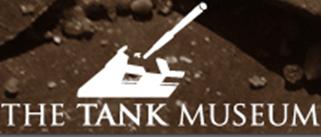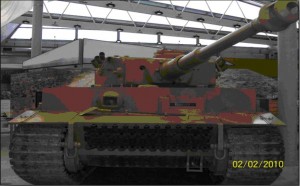Last month Rudy Gozlan gave an inaugural lecture as part of BU’s Public Lecture series. He discussed the biggest issue in ecology right now – how we going to accommodate another 3 billion people on this planet in the next 40 years. Watch Rudy’s lecture (‘A Fish Tale, world preservation and you’) on this subject here: httpv://youtu.be/kK3IsaZ2FYc
Tagged / conservation
Parliamentary group flags natural resources crisis
 The Parliamentary Office of Science and Technology has published briefing notes on Evidence Based Conservation and Landscapes of the Future, which looks at tackling limited resources in the future. The reports, intended to guide MPs, look at policy structures that might help the UK meet future challenges and how evidence can be used to support decisions within conservation.
The Parliamentary Office of Science and Technology has published briefing notes on Evidence Based Conservation and Landscapes of the Future, which looks at tackling limited resources in the future. The reports, intended to guide MPs, look at policy structures that might help the UK meet future challenges and how evidence can be used to support decisions within conservation.
Sustainable methodology of conserving large historic vehicles in the museum environment
Dr Zulfiqar Khan, School of Design, Engineering and Computing, discusses the work undertaken by BU academics and the Tank Museum to conserve large military vehicles…
 The Tank Museum Bovington has the largest collection of military tanks from World War 1, 2 & recent. These historic military vehicles and all other large objects have always been key entities, which provide a wealth of information and insight into the past design process, design methods, materials and manufacturing techniques. These rare & historic collections are valuable assets for our present and the future generation.
The Tank Museum Bovington has the largest collection of military tanks from World War 1, 2 & recent. These historic military vehicles and all other large objects have always been key entities, which provide a wealth of information and insight into the past design process, design methods, materials and manufacturing techniques. These rare & historic collections are valuable assets for our present and the future generation.
These historic vehicles like any other museum artefacts are associated with deterioration due to aging mechanisms such as corrosion, stress corrosion and fatigue crack propagation and wear in the interacting surface.
Large military vehicles such as military tanks were exposed to extreme physical and environmental conditions during the war, in addition after the war the vehicles were left unattended for an unidentified period in the uncontrolled environment resulting accelerated aging mechanisms.
Corrosion is one of the growing persistent problems in the military vehicles in the Tank Museum at Bovington. The historic vehicles are stored in the museum in two distinct controlled and uncontrolled environments with a transitional mode when vehicles move between the two. Varying environmental conditions together with operational factors pose a significant risk to the vehicles.
To preserve these vehicles in a valuable state for the benefit of the society, sustainable conservation techniques are required to slow down or suspend the deterioration within these historic vehicles.
Extraordinary interests and efforts of the Director of The Tank Museum at Bovington Mr. Richard Smith and Professor Mark Hadfield, Director Sustainable Design Research Centre (SDRC) at Bournemouth University lead to the design of a research project between BU and the Tank Museum. Mr Adil Saeed has been conducting important research under the supervision of Dr. Zulfiqar Khan co-director SDRC, Dr. Nigel Garland and Professor Mark Hadfield as mentor.
 Adil was recently invited as guest speaker by Forensic Institute Cranfield University at Shrivenham where his guest lecture was well attended and received. In addition Adil has also presented the outcome of the ongoing research in the Department of Materials at Oxford University, where member of the research consortia and Oxford university staff attended the presentation.
Adil was recently invited as guest speaker by Forensic Institute Cranfield University at Shrivenham where his guest lecture was well attended and received. In addition Adil has also presented the outcome of the ongoing research in the Department of Materials at Oxford University, where member of the research consortia and Oxford university staff attended the presentation.
Recent research outcomes and results were also presented in a paper at an international conference of Society of Tribologists and Lubrication Engineers (STLE) in May 2011 at Atlanta, Georgia. STLE is highly reputable organisation with members around the world. The conference in May attracted around 400 papers with well over 1000 delegates, 70 multinationals industrial participants and 40 student posters.
The aims of the research are to indentify the aging mechanisms such as corrosion, stress corrosion and fatigue cracking, failure due to static and dynamic stresses including the role of residual stresses, deterioration in the interacting components and other potential risks in the historic vehicles through non-destructive methods and develop sustainable methodology for the preservation of these vehicles in different museum environments.











 Dr. Chloe Casey on Sky News
Dr. Chloe Casey on Sky News Final Bournemouth University publication of 2025
Final Bournemouth University publication of 2025 On Christmas Day in the Morning…
On Christmas Day in the Morning… New Nepal scoping review on maternal & neonatal health
New Nepal scoping review on maternal & neonatal health ECR Funding Open Call: Research Culture & Community Grant – Application Deadline Friday 12 December
ECR Funding Open Call: Research Culture & Community Grant – Application Deadline Friday 12 December MSCA Postdoctoral Fellowships 2025 Call
MSCA Postdoctoral Fellowships 2025 Call ERC Advanced Grant 2025 Webinar
ERC Advanced Grant 2025 Webinar Horizon Europe Work Programme 2025 Published
Horizon Europe Work Programme 2025 Published Horizon Europe 2025 Work Programme pre-Published
Horizon Europe 2025 Work Programme pre-Published Update on UKRO services
Update on UKRO services European research project exploring use of ‘virtual twins’ to better manage metabolic associated fatty liver disease
European research project exploring use of ‘virtual twins’ to better manage metabolic associated fatty liver disease